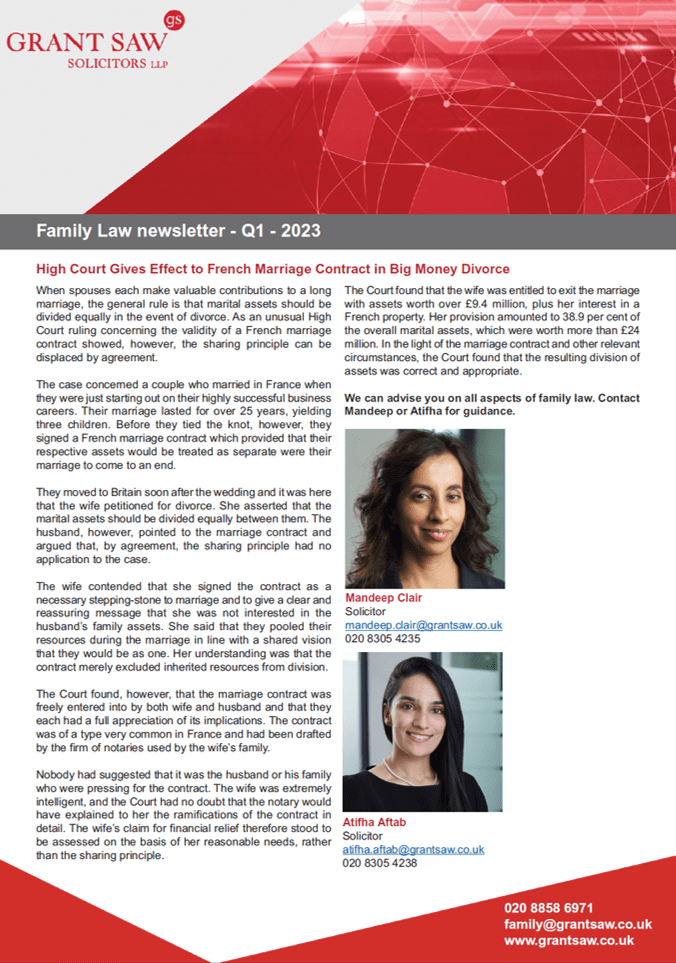The main alternatives to bankruptcy are:
- An informal arrangement with your creditor or creditors;
- A Debt Relief Order;
- An Individual Voluntary Arrangement.
Informal arrangement
If you have only one creditor who is threatening to take legal action against you, they may be willing to accept instalment payments, particularly if you can offer security over a property or other valuable assets. If you have a number of creditors who are chasing payment, it may be possible to get them all to agree to a repayment arrangement, although it is unlikely to be possible to share any security available. Moreover, the problem with any informal arrangement with creditors is that there is no legal restraint on the creditors (unless there is a formal settlement agreement in place with each creditor) and any one of them could break ranks at any time and commence legal action.
Debt relief order
This process, which came into effect in 2009, has had the effect of removing those on low income and assets of low/no) from the full bankruptcy process. A debt relief order is available to debtors who:
- Owe less than £50,000;
- Have less than £75 per month surplus income (taking into account reasonable domestic needs);
- Have less than £2,000 worth of assets (motor vehicles are excluded provided that the car is worth less than £4,000 or the value of a reasonable replacement of a motor vehicle that has been adapted for an individual with a severe long term physical impairment);
- Have not applied for a DRO in the last 6 years;
- You have lived or worked in England and Wales within the last 3 years;
- You are not subject to any other insolvency procedure or debt management arrangement in place.
It is not available for the following debts:
- Secured debts;
- Court fines;
- Family maintenance payments;
- Student loans;
- Debts created after the DRO has been issued.
Individual Voluntary Arrangement (IVA)
An IVA is a formal agreement with your creditors to pay off all or some of your debts.
It works as follows:
- You will need the approval of the majority of your creditors;
- If it is approved no bankruptcy petition may be presented or proceeded with and no other legal action can be taken to enforce payment of the debts whilst the IVA is in force. If a bankruptcy order has been made against you, you can apply to have it annulled;
- The IVA proposal may involve a repayment plan or handing over some assets for the benefit of the creditors, or a combination of the two;
- It is under the control of an Insolvency Practitioner called the ‘supervisor’.
If you make payments in accordance with the agreement, and otherwise comply with the terms of the agreement, you will not be made bankrupt or have other legal action taken against you in respect of the debts.
How to obtain an IVA
You will need the assistance of an Insolvency Practitioner to take the following steps:
- A proposal for the IVA must be prepared in the proper form. At this stage the Insolvency Practitioner acts as the ‘nominee’. The role of the nominee is establishing credibility for the proposal with the creditors. The nominee will normally draft the proposal along with the supporting documents including the debtors’ Statement of Affairs and, if the IVA is approved, will go on to become the “IVA supervisor”;
- An application may need to be made to the court for an interim order to provide a moratorium (freedom from most forms of legal action against you) whilst the proposal is considered by your creditors. The interim order lasts for 14 days but it may be extended;
- Before the IVA proposal can proceed, the nominee must submit a report to the court stating that it has a reasonable prospect of being approved and implemented;
- A meeting of creditors must be summoned with the correct form of notice being given to all creditors. This must take place between 14 and 28 days after the nominee has submitted the report to the court. The nominee acts as chairman of the meeting and has the power to decide whether to accept or reject debts for voting purposes. At the meeting, creditors may propose modifications to the IVA.
The proposal must be approved by at least 75% of the creditors by value, voting at the meeting or by proxy. But it is also necessary that over 50% of these votes are from creditors who are not connected with the debtor.
Once the proposal has been approved:
- The chairman of the meeting files a report with the court indicating the outcome of the meeting;
- The chairman provides details of the IVA to the Secretary of State. These details will be entered in the register of IVAs which is open for public inspection;
- The supervisor will file reports of receipts and payments until the IVA has been completed;
- If problems arise in connection with the implementation of the IVA the supervisor can apply to the court for directions as to how to proceed;
- If the terms of the IVA are not complied with, a warning may be given by the supervisor. If this does not lead to the IVA being adhered to, the arrangement may be terminated. In that event, in accordance with the terms of the IVA, the supervisor is likely to petition for the debtor’s bankruptcy;
- The supervisor may then become the trustee in bankruptcy.
To discuss the alternatives to bankruptcy, please email litigation@grantsaw.co.uk or contact our insolvency experts on 020 8858 6971.
Meet the Individual Voluntary Arrangements and Alternatives to Bankruptcy team














































